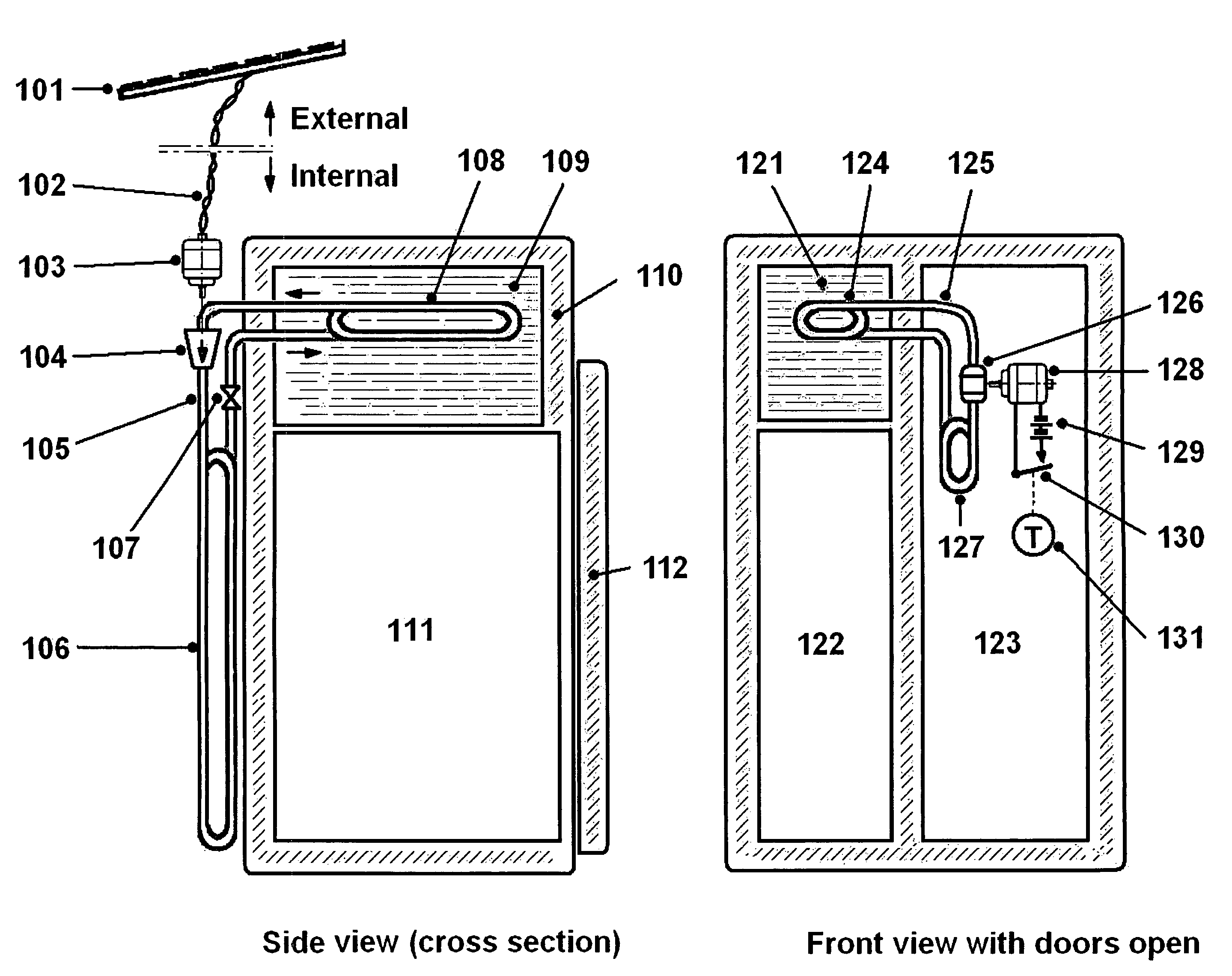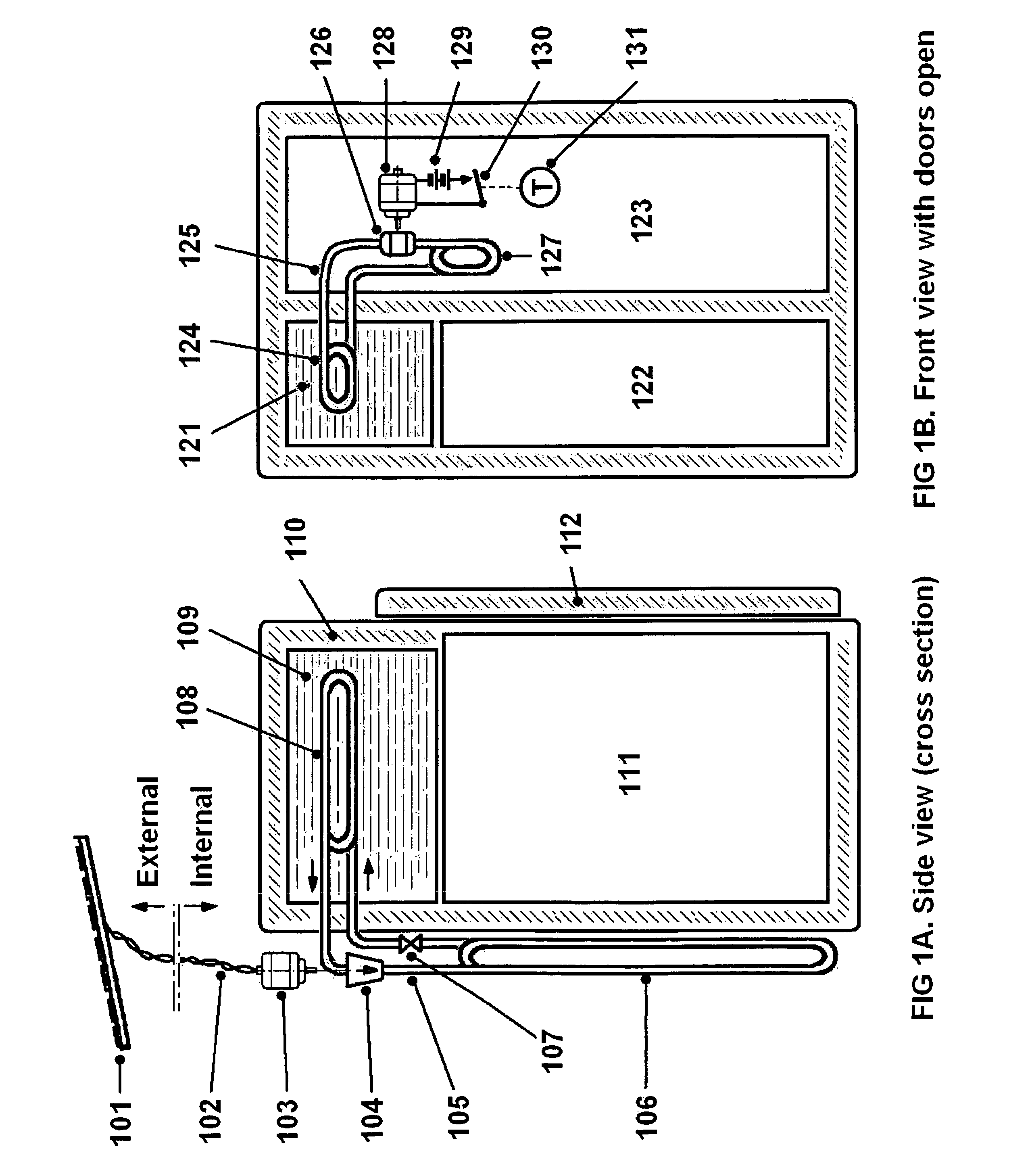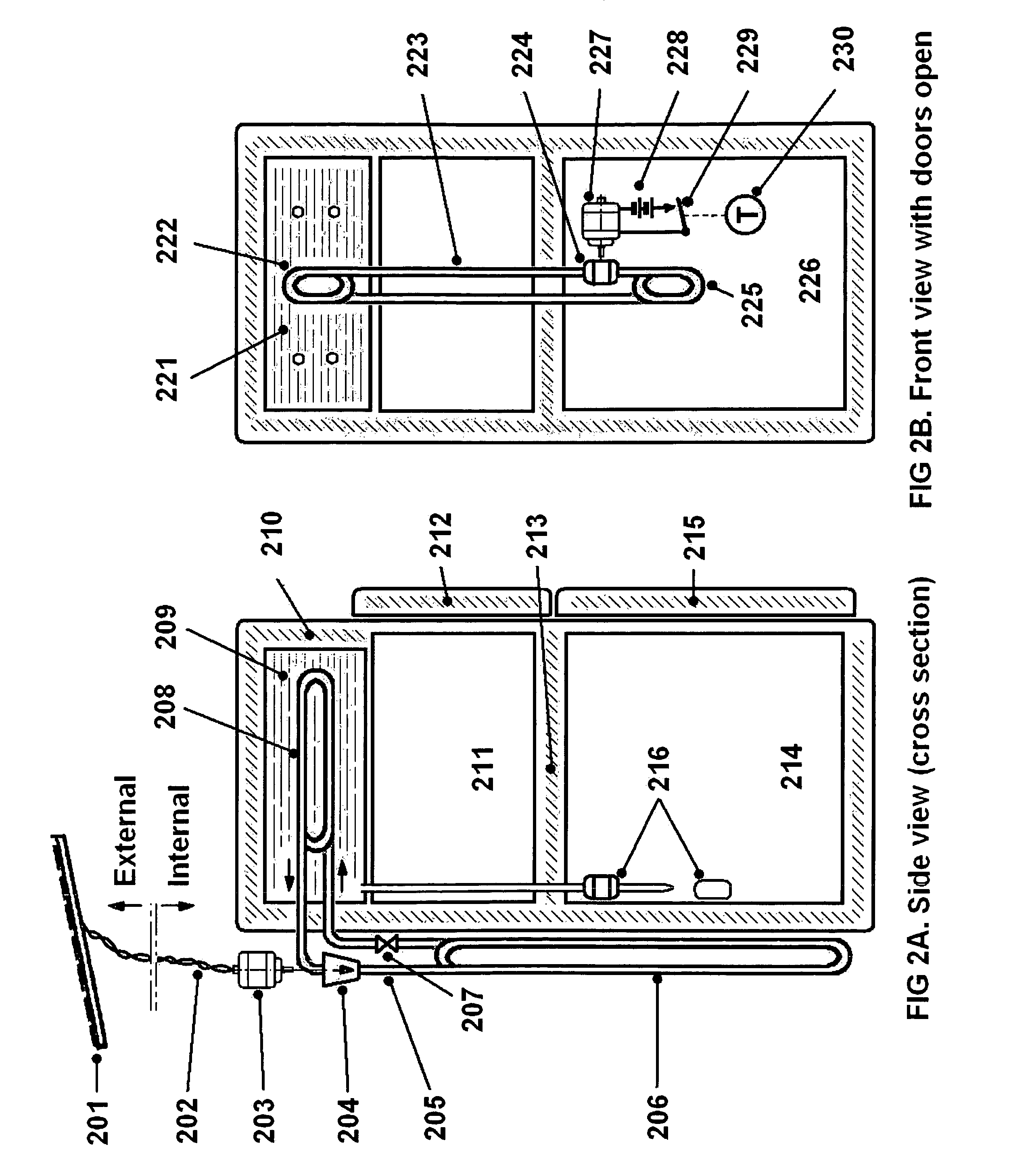Solar-powered refrigerator using a mixture of glycerin, alcohol and water to store energy
- Summary
- Abstract
- Description
- Claims
- Application Information
AI Technical Summary
Benefits of technology
Problems solved by technology
Method used
Image
Examples
Embodiment Construction
[0014]FIG. 1A shows a solar-powered side-by-side refrigerator. The solar photovoltaic panel 101 is placed external to the house, typically on a south-facing roof or an awning. Through cable 102, the DC electrical current generated by the sunlight is directed to a DC motor, 103. The DC motor 103 drives a compressor 104, which compresses a refrigerant through pipe 105, and makes it hot. The condenser 106, located outside the refrigerator, disperses the heat into the air, and the refrigerant is condensed into liquid. The refrigerant is expanded through an expansion valve 107 to become cooled gas. Through a heat exchange coil 108, the gaseous refrigerant cools down the energy-storage medium 109, placed in vessel 110. The appropriate energy-storage medium 109 is typically a mixture of glycerin, alcohol and water, which has a freezing point corresponding to the desired temperature of the freezer 111. The freezer 111 is in thermal contact with the energy-storage medium 109, but protected b...
PUM
 Login to View More
Login to View More Abstract
Description
Claims
Application Information
 Login to View More
Login to View More - R&D
- Intellectual Property
- Life Sciences
- Materials
- Tech Scout
- Unparalleled Data Quality
- Higher Quality Content
- 60% Fewer Hallucinations
Browse by: Latest US Patents, China's latest patents, Technical Efficacy Thesaurus, Application Domain, Technology Topic, Popular Technical Reports.
© 2025 PatSnap. All rights reserved.Legal|Privacy policy|Modern Slavery Act Transparency Statement|Sitemap|About US| Contact US: help@patsnap.com



